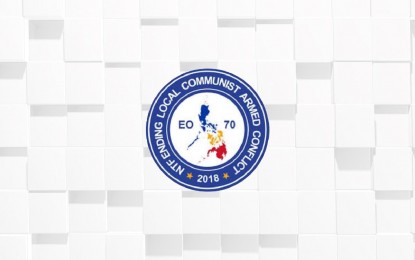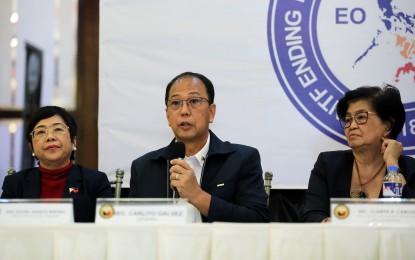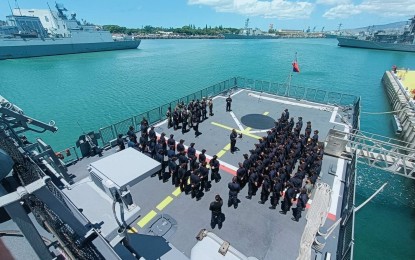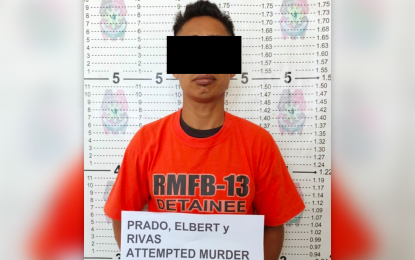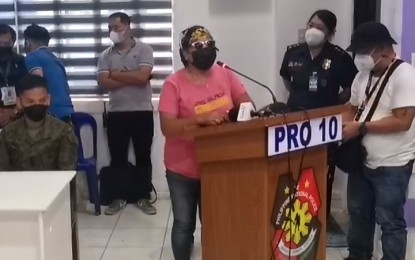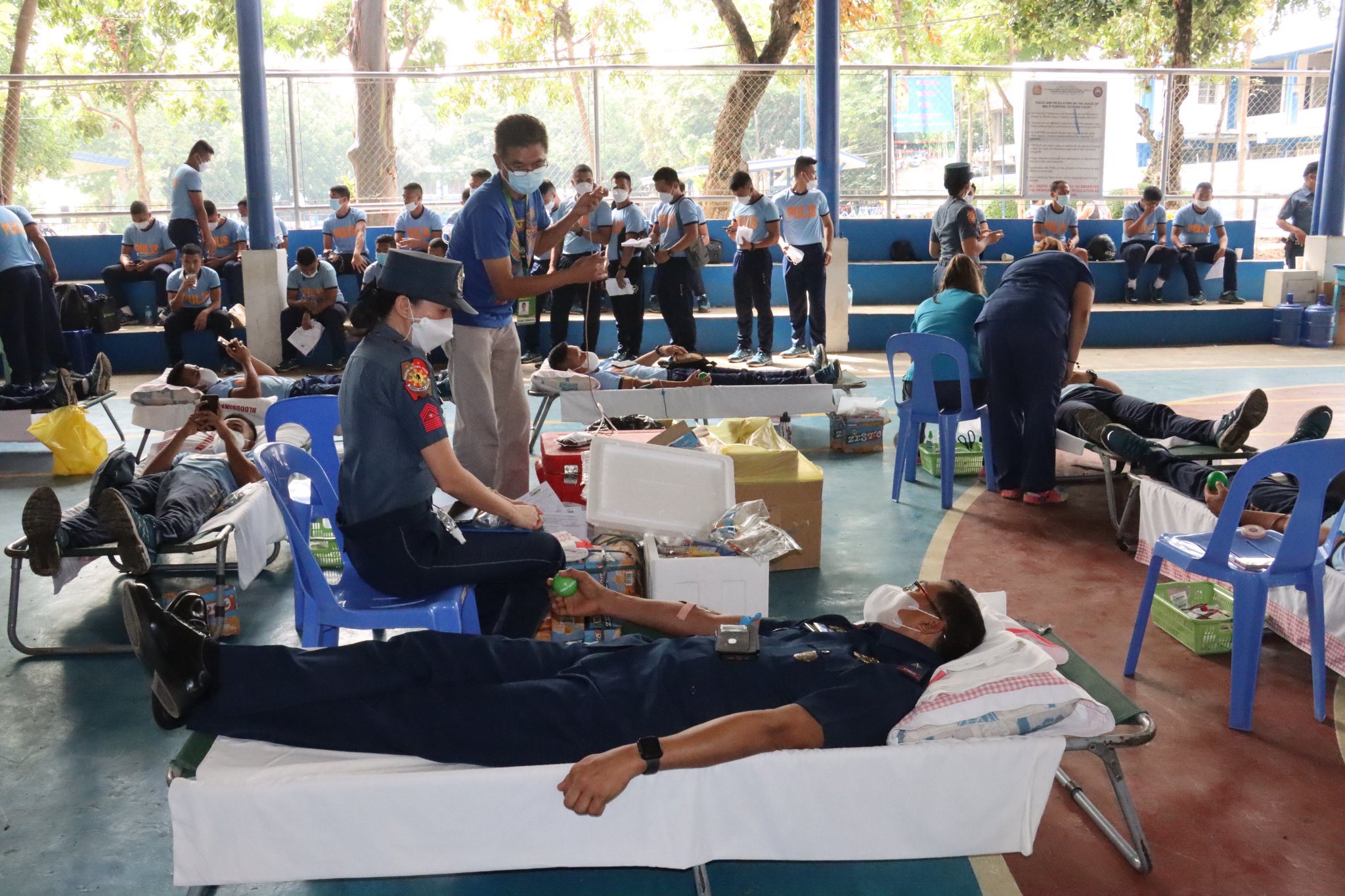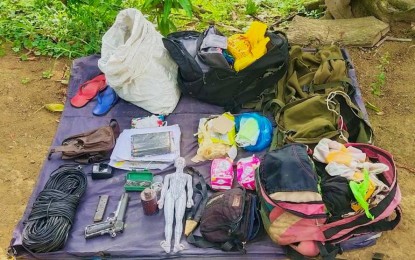From the Philippine News Agency (Jul 15, 2022): Cordillera celebrates 35 years of preserving peace in region (By Liza Agoot)
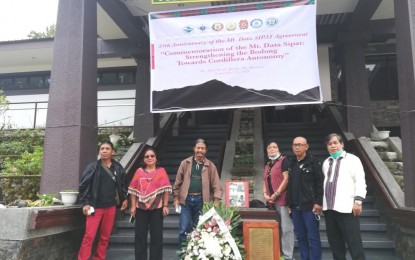 PEACE TALKS. Gabino Ganggangan (3rd from left), Leonardo Bun-as (5th) and Andres Ngao-i (rightmost) - who took part in the peace agreement between the government and the Cordillera People's Liberation Army more than three decades ago - commemorate the founding anniversary of the Cordillera Administrative Region, at Mount Data Hotel in Mountain Province in this file photo on Sept. 13, 2021. The region's quest for autonomy continues as its people preserve peace and order in the region. (PNA file photo by Liza T. Agoot)Thirty-six years ago, in September 1986, government officials and the local armed group Cordillera People's Liberation Army (CPLA) sat down to talk about peace and the possible laying down of arms at the Mt. Data Hotel in Bauko, Mountain Province.
PEACE TALKS. Gabino Ganggangan (3rd from left), Leonardo Bun-as (5th) and Andres Ngao-i (rightmost) - who took part in the peace agreement between the government and the Cordillera People's Liberation Army more than three decades ago - commemorate the founding anniversary of the Cordillera Administrative Region, at Mount Data Hotel in Mountain Province in this file photo on Sept. 13, 2021. The region's quest for autonomy continues as its people preserve peace and order in the region. (PNA file photo by Liza T. Agoot)Thirty-six years ago, in September 1986, government officials and the local armed group Cordillera People's Liberation Army (CPLA) sat down to talk about peace and the possible laying down of arms at the Mt. Data Hotel in Bauko, Mountain Province.
The tension-filled yet successful peace talks led to the creation of what is now the Cordillera Administrative Region.Andres Ngao-i of the Kalinga province, who was in his 20s when he served with the secretariat of the peace process, said the traditional way of peace negotiations, or "bodong" in Kalinga, was adopted to give a deeper meaning and relevance to the peace process under the administration of the then newly installed President Corazon Aquino.
"We honor the bodong. It is a pact entered by respected elders who represent us. We do not break it because doing so will mean hostilities. That is the reason we uphold it and we continue to live with it," Ngao-i told the Philippine News Agency on Thursday.
During the signing of the peace agreement, he said, President Aquino gave a bible, rosary, and an Armalite to CPLA leader and former priest Conrado Balweg, who in turn, gifted the chief executive with a shield, spear, and bolo as a symbolic exchange of tokens.
Prior to the issuance of Executive Order 220 that created the CAR on July 15, 197, the CPLA and the government forged a "sipat," a peace agreement that signals the start of peace negotiations.“While it is late, we realize that we were correct to have the sipat. The sipat is a reminder that there was a peace agreement and there were demands stipulated, among which is the establishment of an autonomous region in the Cordillera,” he said, adding that “without the sipat, Executive Order 220 would not have been issued and there would have been no Cordillera.”
The historic event also paved the way for the CPLA’s laying down of arms and the government’s recognition of the aspirations for the establishment of an autonomous region of the Cordillera.One of the signatories of the 1986 agreement, Leonardo “Musling” Bun-as of Tinglayan, Kalinga, who is now 75 years old, in an earlier interview, recalled the day President Aquino signed the peace agreement.
Together with Balweg, Bun-as was among the members of the New People's Army who broke away from the communist group and formed the CPLA. He was among Balweg’s political team.
“We were happy when President Cory said that it should not be guns that must talk but we should be on the table talking to solve the problem and your demands,” said Bun-as, adding that he was beside Cory and Balweg when the exchange of tokens happened
Bun-as recalled, “I was feeling happy then because the peace talks have resulted positively and there will be no more fighting.”
Bun-as called on fellow Cordillerans and leaders of the national government to continue working together to maintain peace in the region.
Meanwhile, regional elder Mauricio Domogan, in his "Uggayam" (traditional prayer), urged not just fellow Cordillerans but all Filipinos to support the region’s bid for autonomy, which he said is laid down in the 1987 Philippine Constitution.
https://www.pna.gov.ph/articles/1179023
